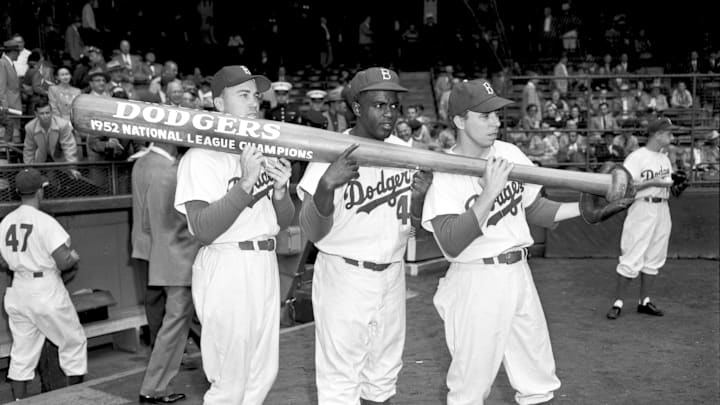Batting third for the Dodgers is center fielder Duke Snider
Duke Snider gets to grab his bat next. Possessing the second-highest WAR for a position player in team history at 65.3, he’s also the franchise leader in home runs.
Snider plays the ever-important center field for this team. The 1955 RBI leader and 1956 NL home run champion, Snider batted .300/.384/.553 with 389 home runs during his 16 seasons with the Dodgers. He was one of the preeminent power hitters of the 1950s. From 1953-1957, he hit 40+ long balls in each season.
His job on this team is to drive in Wheat and/or Robinson. It shouldn’t be too hard. His 1,271 career RBI with the Dodgers tops everyone to ever suit up for this team.
The left-handed swinging outfielder is a little bit of a strikeout magnet. He led the league in this category three times in his career, with 104 in 1957 as his highest number. He did begin to decline when the Dodgers moved away from Brooklyn. Out in Los Angeles, he topped 20 home runs only once. Was it the climate, ballpark, or just getting into his 30s? It’s probably the latter.
It’s a no-brainer who starts in center field for this Dodgers team. It’s also fairly obvious who gets to bat cleanup behind him. Yet another Hall of Fame player finds his way into this Dodgers lineup batting fourth.
